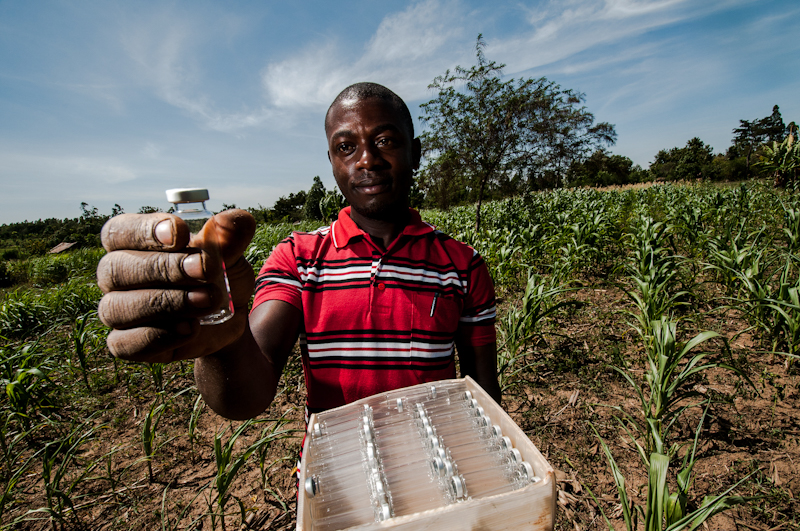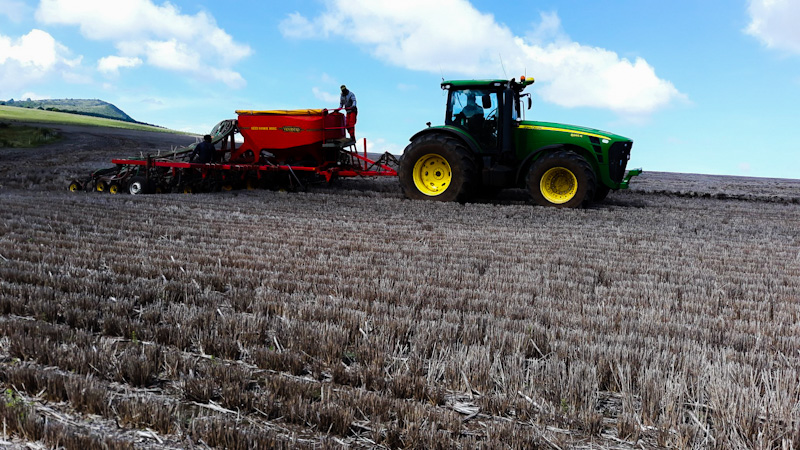Youth account for 47.6 per cent of Kenya’s population, estimated at 47.6 million, under the age of 35, according to the Kenya National Bureau of Statistics 2019 Population and Census.
Out of this, 800,000 young Kenyans enter the labour market annually.
They offer a dynamic and innovative workforce, have a high uptake of technological know-how, and can take on significant levels of risk.
The agriculture sector presents a huge opportunity for employment to absorb the youth and ensure food security.
According to the KNBS, the sector contributes close to 33 per cent of the Gross Domestic Product (GDP) and another 27 per cent of GDP indirectly through linkages with other sectors.
Low profitability, poor security of land tenure, and other high risks have forced almost half of the rural youth to move to urban areas to seek jobs in cities.
At the same time, about 70 per cent of the households living in rural depend on agriculture for their livelihood.
The sector provides the most critical platform for employment, income generation, and food security and can drive poverty reduction through increased productivity, value addition, and links to other sectors.
However, if youth and their parents gravitate toward off-farm work and careers in urban areas, then its great promise is lost.
The current generation’s youth have shown little interest in agriculture because they rarely see a future in the sector.
While most are generally lazy and can’t afford heavy work, some believe that the sector is only meant for uneducated people. They need to be made aware that there are many pathways to economic engagement for youth in agriculture, not all of which means getting their hands dirty.
Because of rising youth unemployment, ageing farmers, and declining crop yields in traditional farming systems, engaging youth in agriculture should be a top priority.
So, what are some of the solutions that can be applied to make agriculture more attractive to the younger generations?
Linking social media to agriculture
The rise of social media and its attraction among young people with access to the appropriate technologies could be a route into agriculture if the two could be linked.
Mobile phone use in Kenya and Africa is growing rapidly, and many young people are now much more connected to sources of information.
We could use these channels to promote agriculture and educate young people about the proper farming methods, the best fertilizers to apply and seasons, and the seeds, among other things.
Facilitating access to land and credit
For most young people eager to get into the agricultural sector and make ends meet, accessing land is usually difficult or scarce. With collateral, getting credit to buy land is possible.
Innovative financing for agriculture and small businesses is needed. For example, affordable loans can be provided to youth with innovative proposals in agriculture or micro franchising.
Empowering young people to speak up
For the youth to successfully transform agriculture, barriers to their engagement, such as access to land and finance, must be addressed.
National policies on farming and food security need to identify and address issues facing young people.
Youth need to become part of policy discussions at the local and national levels. They should be given a chance to voice their opinions on how best they can be involved in the sector and what they need to succeed.
Making agriculture more profitable
This may seem like a straightforward statement to make, but it could be a difficult one to realize.
Various factors, such as low yields and market failures in Africa, reduce the potential profitability of agriculture.
Making agriculture profitable requires that the costs of farming and doing business are reduced while, at the same time, productivity increases.
Although many people believe that only large-scale commercial farming benefits from this, these small farms can also be highly productive with low labour costs.
Strengthening higher education in agriculture
Few students choose to study agriculture, partly because the quality of agricultural training is mixed.
It may be time to link the taught materials to technological advances to facilitate innovation and have greater relevance to a diverse and evolving agricultural sector focused on agribusiness and entrepreneurship.
Young people should be equipped with technical skills and build capacity for management, decision-making, communication, and leadership skills.
Reforms to agricultural tertiary education should be designed for young people, and the process requires their direct engagement.
Greater awareness of the benefits of agriculture as a career needs to be built amongst young people, particularly the opportunities for greater market engagement, innovation, and farming as a business.
The media, ICT, and social media can all be used to help improve agriculture’s image across a broad audience and allow for sharing of information and experiences between young people and young farmers.





